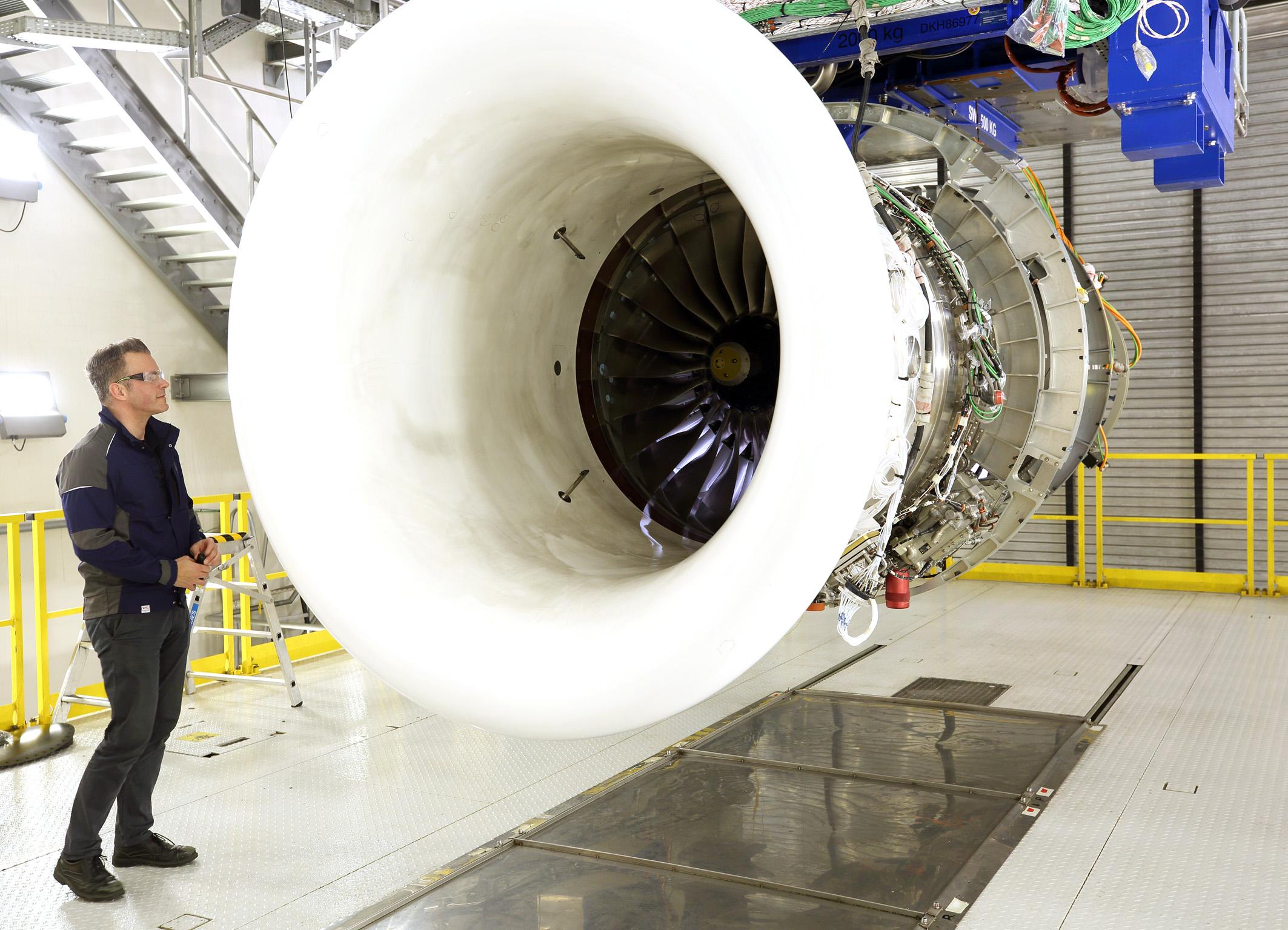
Recent engine selections for Gulfstream’s ultra-long range G800 and Dassault’s Falcon 10X with the Pearl have solidified Rolls-Royce’s lead in the heavily contested heavy-metal sector of the business jet market, said Colm Golden, senior vice president of the company's Pearl 700 program.
“I think it just shows the power of the Pearl family now, just like the BR700 family before it,” said Golden. “Obviously we were disappointed not to win the G500 and G600 and the Bombardier Global 7500 in the past, but I think since then we really have battled our way back into being the dominant player.”
The announcement that Gulfstream’s newly revealed G800, like the G700 before it, will be powered by the Pearl 700 comes six months after the Pearl 10X was revealed as the new engine for Dassault’s long-range Falcon 10X. Together these milestones mean Rolls has “really secured our market in the ultra-long range and the very long-range sector of business aviation,” he added.
The Pearl 700 was unveiled in 2019 as the powerplant for the G700 and, at the time, was the second engine to evolve from the company’s Advance2 demonstrator program following the debut of the Pearl 15 on the Bombardier Global 5500/6500. Rated at 18,250 lb. thrust, the Pearl 700 produces 8% greater take-off thrust than the BR725, but with 5% lower fuel burn.
The engine’s 51.8-in.-dia. fan is made of 24 blisked titanium blades—the first of its type ever used in a Rolls-Royce commercial jet engine—and leverages technology developed for the liftfan used on the Lockheed Martin F-35B short take-off and landing combat aircraft. The Pearl 15 uses the existing 48-in. diameter fan of the BR710.
Sharing a common 24:1 pressure ratio high-pressure core with the Pearl 15, the Pearl 700 incorporates a 10-stage, high pressure compressor—six of which are blisked—as well as a low emissions combustor and a two-stage, shroudless high-pressure turbine. The low-pressure system includes an extra fourth-stage turbine set to drive the bigger fan. The engine has a bypass ratio of approximately 6.5:1.
“We're really in the thick of final certification tests and over the last number of months we've had quite a number of big milestones,” said Golden. Recently completed key tests include an endurance evaluation. “We put the hot end of the engine through its paces. After the test we did a full strip down and layout of the engine and had EASA (the European regulatory agency) look at its condition and they saw that it was in a fantastic state,” he added.
Rolls also recently completed water ingestion testing in Canada, in which 10 liters of water per second was funneled through the engine. “It passed that test flawlessly,” said Golden, who adds that on Oct 9 the engine also passed the 1,000-cycle mark of initial maintenance inspection tests. In this test the engine is put through the cyclic evaluation in a deliberately out-of-balance configuration. “The engine was in great condition after that,” he added.
In parallel with the overall test effort, which to-date has encompassed more than 8,000 cycles and 3,000 test hours, a fleet of six aircraft—including one production test aircraft—continue to build up flight hours on the Pearl 700. More than 3,000 engine flight hours have been amassed since the flight test program began in February 2020. Highlights included tests at a top speed of Mach 0.99 and a maximum altitude of 54,000 ft. However, in typical operations, the G700 has a maximum operating speed of Mach 0.925 and a maximum cruise altitude of 51,000 ft.
The G800 will be a shorter but longer-range sibling of the 7,500 nm-range G700 that will ultimately replace Gulfstream’s G650 large cabin jet at the higher end of the product line. Flying up to 8,000 nm at Mach 0.90 with eight passengers, four crew and NBAA IFR reserves, the G800 is due to enter service in 2023. The 7,500 nm-range Falcon 10X is meanwhile targeted at entry-into-service in 2025.
